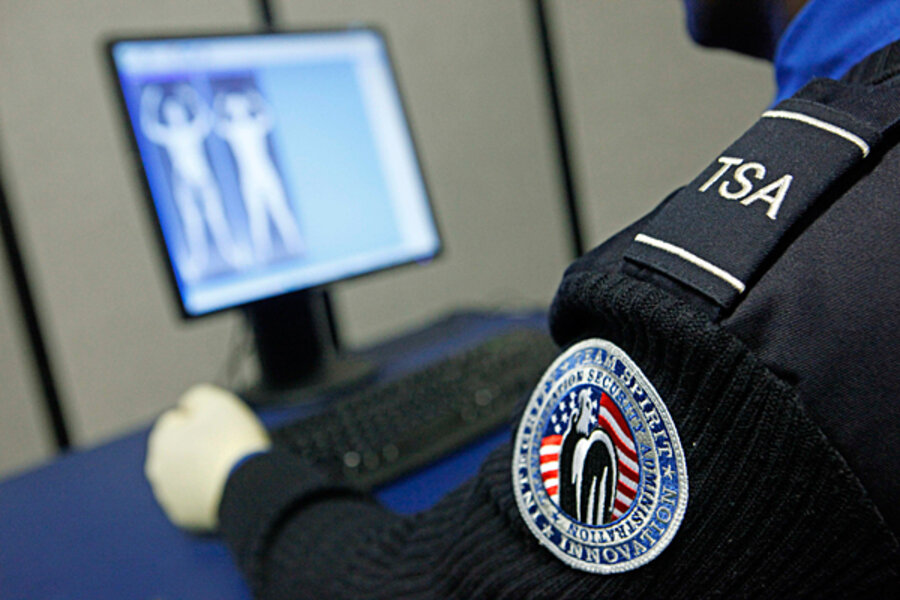Airport security: two alternatives to full-body scanners
Loading...
Amid privacy concerns sparked by the move to triple the number of full-body scanners in US airports, some groups are pushing for alternative technologies they say could provide the same, or better, level of screening without the privacy issues.
The Transportation Security Administration’s (TSA) move to expand the number of full body scanners in US airports by early 2010 comes in the wake of the failed Christmas Day terrorist attack. The bomber hid the explosives in his underwear, which would have been caught only by a full-body pat down or in a full-body scanner that can see through clothing.
But the use of full body scanners is controversial because it snaps something close to a naked image.
On Wednesday, the American Civil Liberties Union (ACLU) on its website advocated the use of the “Puffer,” a machine first developed by General Electric that can detect chemical particles a person may have on their body and analyze whether or not they are harmful. The machine works by blowing puffs of chemically-sensitive air around the individual.
Another potential alternative is the “Guardian,” an “explosive trace-detection portal machine” similar to the Puffer but more advanced. The sensors in the Guardian can detect chemical molecules more quickly and in hard-to-detect areas such as the inside of shoes.
Chris McBee, director of sales and marketing for Syagen Technology, says his company spent $3 million to develop prototypes of The Guardian. TSA contributed $1.5 million but did not continue the program. That’s unfortunate, Mr. McBee says.
“We have a better mousetrap. There are solutions out there that are viable alternatives to whole body imaging and that have superior detection characteristics,” he says.
These alternatives aren’t perfect, either. The TSA already operates 18 Puffer machines across the US but are being phased out due to maintenance issues, says Greg Soule, a spokesperson for the agency. There are also reports that the puffers clogged up because of dust and humidity at the airports.
The TSA is “constantly looking at new emerging technology to address evolving threats,” Mr. Soule says.
The TSA currently uses 40 body scanners in 19 US airports as secondary screeners for passengers who may call for a second look. Another 150 scanners will be introduced in 2010, and the agency has the funding to order 300 more.
While passenger rights advocates such as the ACLU object to the scanners’ intrusiveness, others say the scanners prolong the already-lengthy screening time at airports.
The International Air Transport Association says the scanning process will take 45 seconds for each passenger, which would create between two- and five-hour flight delays, according to Andrew Compart, senior editor for Aviation Week.
In deploying new technology, the authorities should choose systems that are either more efficient or will replace existing steps in the system, he says. “There is concern that if you rush this stuff in but not take anything away, you’re going to add too much time to the system and clog it up,” says Mr. Compart.
However, TSA's Soule says the scanners takes 15 seconds, not 45, to assess each passenger. “It has the ability to detect both metallic and non-metallic threats under the clothing of a passenger,” he says. “And that can include both improvised explosive devices as well as firearms.”
Ultimately, the solution may not be more technology, says Compart, but more resources for better intelligence gathering to help determine who needs a second and more thorough screening.
“We collect a lot of information on passengers … so let’s put all that together and determine who needs extra checks and put them through it and not everyone else.”
---
Follow us on Twitter.





